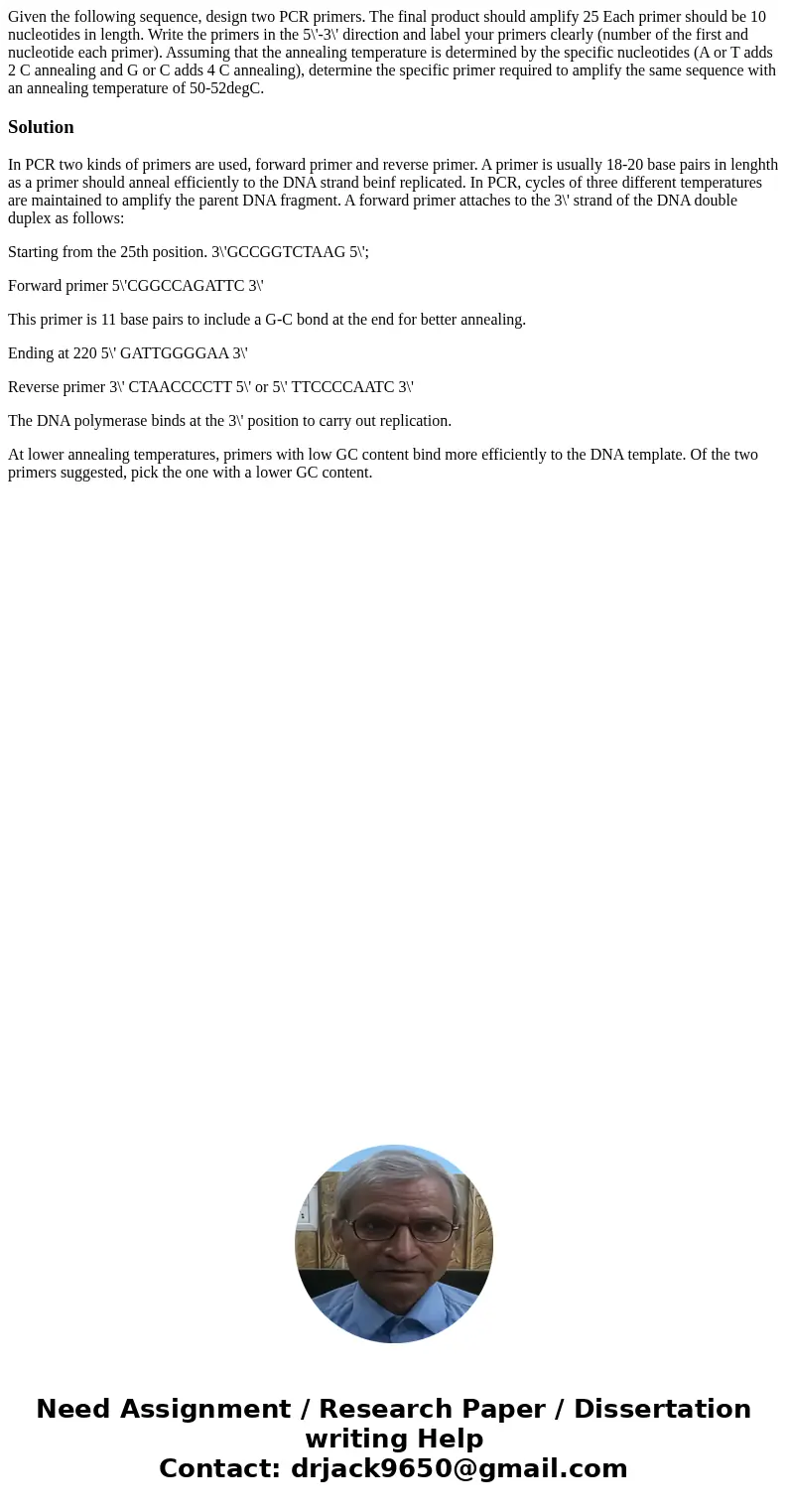Given the following sequence design two PCR primers The fina
Solution
In PCR two kinds of primers are used, forward primer and reverse primer. A primer is usually 18-20 base pairs in lenghth as a primer should anneal efficiently to the DNA strand beinf replicated. In PCR, cycles of three different temperatures are maintained to amplify the parent DNA fragment. A forward primer attaches to the 3\' strand of the DNA double duplex as follows:
Starting from the 25th position. 3\'GCCGGTCTAAG 5\';
Forward primer 5\'CGGCCAGATTC 3\'
This primer is 11 base pairs to include a G-C bond at the end for better annealing.
Ending at 220 5\' GATTGGGGAA 3\'
Reverse primer 3\' CTAACCCCTT 5\' or 5\' TTCCCCAATC 3\'
The DNA polymerase binds at the 3\' position to carry out replication.
At lower annealing temperatures, primers with low GC content bind more efficiently to the DNA template. Of the two primers suggested, pick the one with a lower GC content.

 Homework Sourse
Homework Sourse